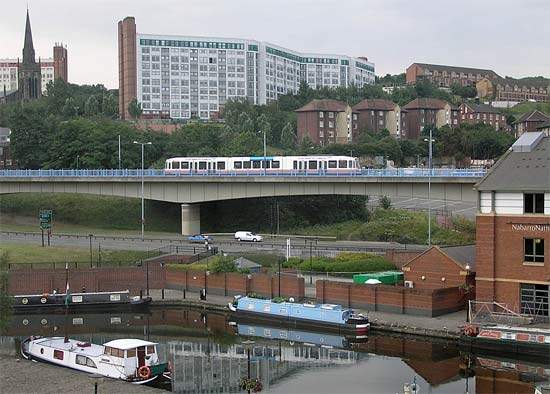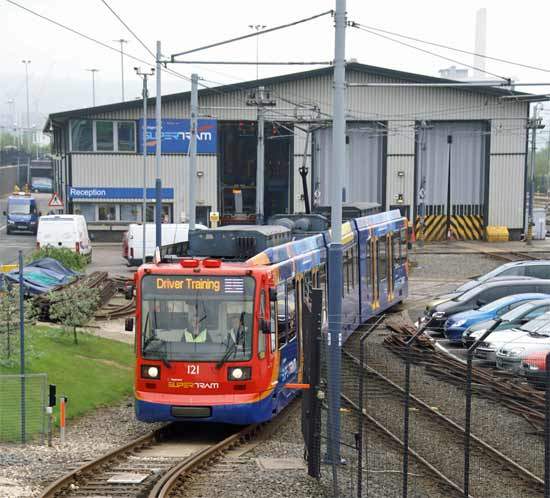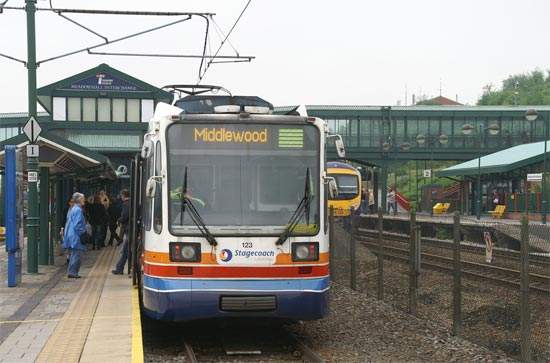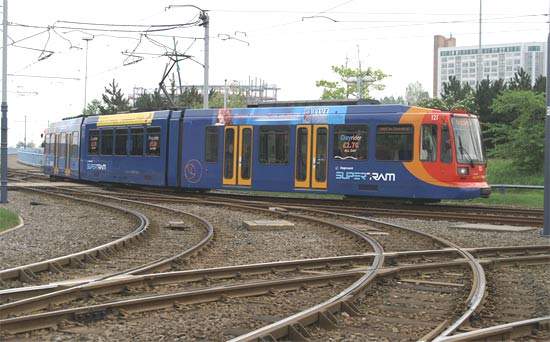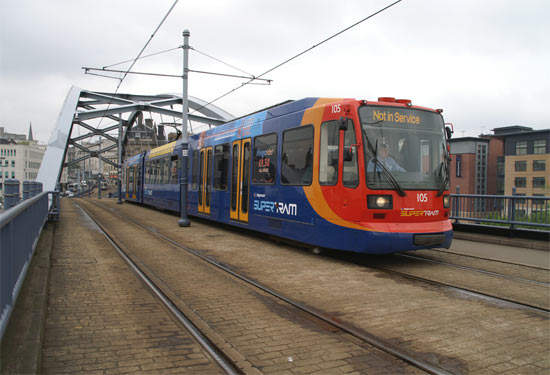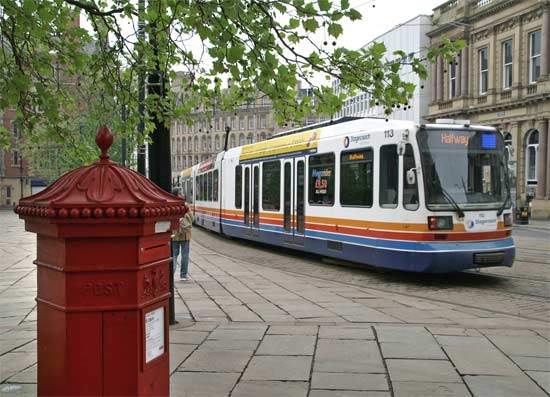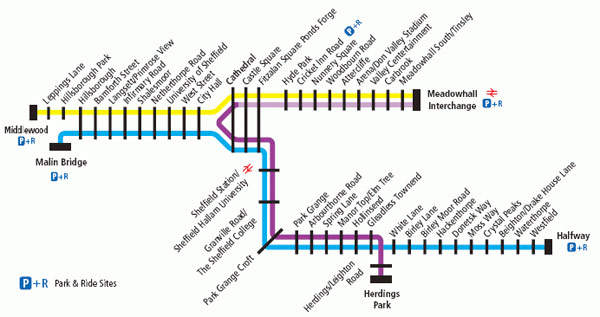Sheffield in South Yorkshire is part of one of the UK’s largest conurbations. Of ancient origins and famed for heavy industry, the city has more recently evolved a wider commercial base, assisted by its nearby motorway links and rail connections. Like many of the larger British cities, Sheffield once had a comprehensive tramway system, but this was completely closed by 1960.
Set on the eastern edge of the Pennines, the extremely hilly city has major roads climbing steeply away from the centre in several directions, a factor that had encouraged the growth of the original tramway, better able to cope than early motor vehicles.
The main rail connection for local and long distance services is the former Midland Railway north-south main line, largely following a valley bottom, with the station at the edge of Sheffield’s central area.
THE PROJECT
The Supertram project in part owes its origins to the transport responsibility held by the short-lived (1974–1986) South Yorkshire County Council through its component body, the South Yorkshire Passenger Transport Executive (SYPTE). As public transport coordinator, SYPTE sufficiently modified an earlier, more expansive light rail plan to gain the required permissions.
A £240m construction phase began in 1991. By largely using existing heavy rail alignments, the line to the Meadowhall retail complex was ready for operation by 1994. The purpose-built depot was built adjacent this line near the Nunnery Square stop. Even with the more complex arrangements needed for street running sections, all routes were completed by the end of 1995.
Supertram was initially run by SYPTE through its South Yorkshire Supertram arm, but this was sold to transport specialist Stagecoach in 1997. SYPTE retains ownership of the infrastructure, with Stagecoach having operation and maintenance rights until 2024.
ROLLING STOCK
The 25-strong fleet of German-built Düwag-Siemens Supertrams were designed to handle the particular demands of the new Sheffield system. With one megawatt of power and all eight axles driven, they represent the UK’s most powerful light rail vehicles.
The double-ended, three-part articulated trams provide low floor entry, a 40% low floor area and can cope with a curve radius of 25m and a vertical curve radius of 100m.
The trams maintain a daytime five to ten minute frequency on main routes, the destination and colour code of the route being operated being shown at the vehicle ends on electronic displays that have replaced the original fittings. Rolling stock is undergoing a refurbishment programme that should be complete by summer 2008.
Most clearly indicated by a livery change (the third in the fleet’s working life), internal changes include improved lighting, coverings and re-use of space, with each set scheduled to take 43 days for completion. The fleet has proven to be reliable and seems set to achieve the design life of up to 35 years.
INFRASTRUCTURE
The 1,435mm gauge system is mostly double tracked, with a mix of reserved alignments, central road reservations and on-street operation. Lines radiate from the city centre to termini at Middlewood to the north west, Meadowhall to the north east and Halfway to the south east.
There are short branches to Herdings Park and Malin Bridge. The three main lines converge at the intensively used triangular junction near Park Square. The most striking engineering feature is Park Square Bridge, a bow-string steel arch built to take the tracks across a busy road junction near the city centre.
Tram stops have low platforms designed for single tram lengths and are fairly basic in terms of passenger comforts. Meadowhall Interchange, the only double-tracked terminus, links heavy rail and bus services with Supertram, all servicing the adjacent regional shopping centre.
A stop on the Halfway line gives high-level walkway access to the main Sheffield railway station. To discourage car use into the city centre, there are park and ride sites at Meadowhall Interchange, Nunnery Square, Middlewood, Malin Bridge and Halfway.
SIGNALLING/COMMUNICATION
Supertram uses its own signalling for on-street running and at crossings. To avoid confusion with any adjacent road signs, the signals use variable patterns of white lights to indicate commands and point settings. A policy change by Stagecoach brought conventional conductors on board the trams for ticket sales, added security and providing information.
The trams have pre-recorded information announcements for stops, supplemented as necessary by a driver PA system. The routes are designated by colour, this also being shown on tram route indicators.
THE FUTURE
Initially hampered by urban clearance along parts of the route and intense fare cutting by competing bus operators, for several years Supertram ran well below its capacity. However, helped by the refurbishment programme, service promotion, competitive pricing and free local travel for over-60s, ridership is increasing and in 2006 Supertram carried 13.1 million passengers.
Several route extensions have been proposed, for example to Rotherham, Dore and Maltby, but in spite of performance improvements, prevailing transport policies have restricted the system to the initial lines.
Means of increasing capacity which may lead to additional vehicles joining the fleet and/or route revisions are being investigated. In April 2007, Supertram operator Stagecoach won the ten-year contract to run the Manchester Metrolink light rail system.

